Traditional Penang Food: Authentic Penang assam laksa, fried kway teow, Nyonya fried rice & chendol in Toa Payoh
It has been 3 years since I last visited Penang and I’m yearning for all the yummy street food you can get there. I recently came across a recommendation in a Facebook group about Traditional Penang Cuisine in Toa Payoh and my curiosity got the better of me.

When I got there, I was surprised that it was actually located along the same food alley together with Hiang Ji Roasted Meat Noodle House, Saffrons and Han Kki; places that I frequent. I was even more shocked when the staff told me that they have been around for the past 8 years. It’s so odd that I’d never noticed them here.

That being said, the words, ‘Penang Savour’, were imprinted on the menu (they have a few outlets around Singapore). I later found out that they are under the same management.
What I tried at Traditional Penang Food
My dining partners and I kickstarted our Tuesday lunch with the Penang Laksa (S$5.90).
The bowl contained thick rice noodles, mackerel fish bits, sliced cucumber, pineapple strips, mint leaves, red onion slices, sliced lettuce, chopped ginger flower (rojak flower), sliced chilli and a spoonful of hei ko (prawn paste).
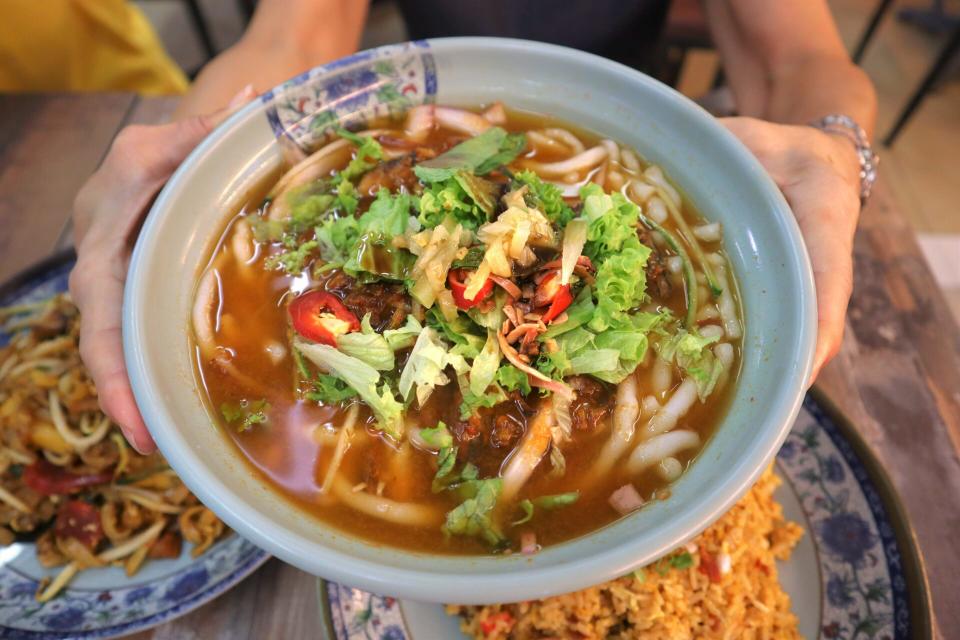
Upon taking a closer look at the noodles, I realised that it wasn’t the usual thick bee hoon. Instead, it looked to me like a wrinkly mee tai mak.
Every bunch of noodles my chopsticks picked up lifted the red onion slices, mint leaves and chopped rojak flower along for the mini adventure inside my mouth.

The tiny bits of rojak flower were small but mighty, mimicking David who had confronted the giant, Goliath. Every bite of it released flavours which superseded the other ingredients.
I loved how the bits of mackerel fish gave a little burst of umami in between spoonfuls, but the portioning was a little miserable.
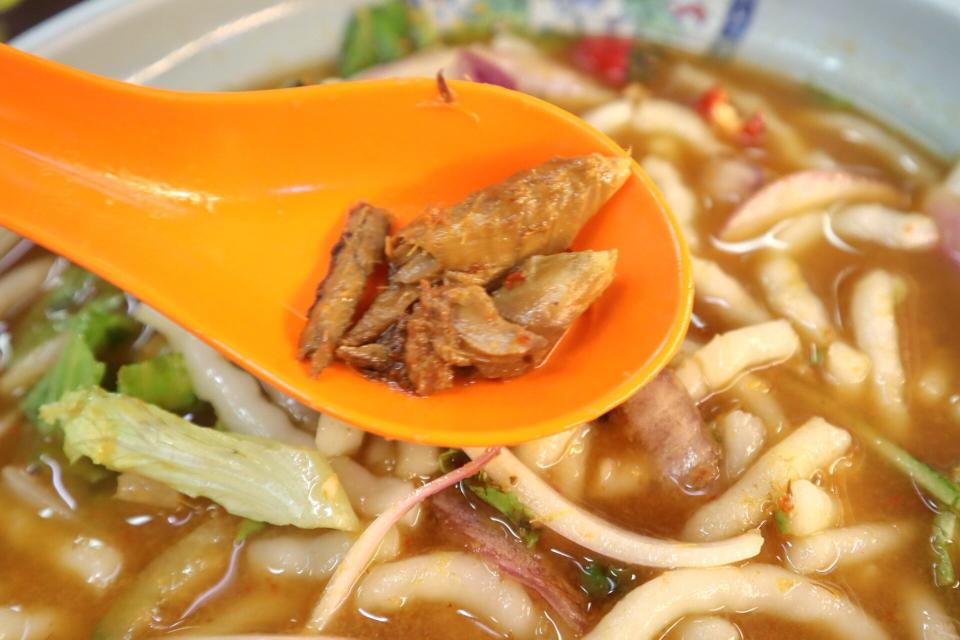
I felt that the gravy wasn’t robust enough and it could afford to be more sour and thick. However, my dining partner disagreed with me and said that she likes it as it is— I’ll leave it to you to judge.

We then moved on to the Nyonya Fried Rice (S$7). The rice had bits of crab stick, egg, red onions and a sprinkling of spring onions (not a lot of ingredients for the price point).

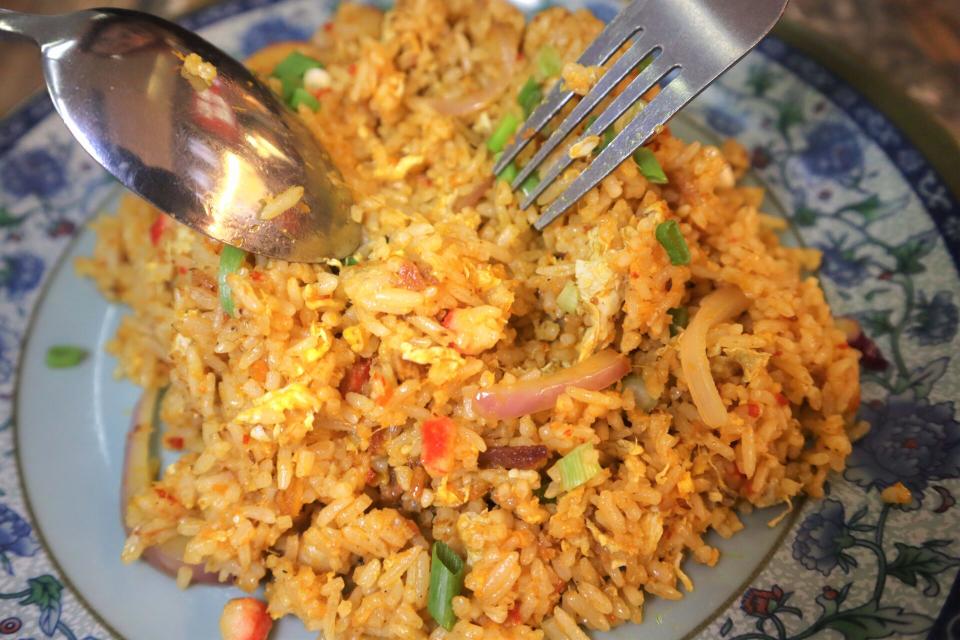
As the 3 of us had our first couple of mouthfuls, the following happened in chronological order: complete silence, synchronised head-nodding, the word, “mmmmmm!” coming out of our mouths.
It was delicious and I suddenly felt that my S$7 was well-spent, despite the scarcity of ingredients.

From what I know, Nyonya sauce is a blend of Chinese ingredients with Malay spices. As a result, the grains had a complex taste of tangy, spicy and aromatic notes all happening at the same time— a multi-dimensional experience, indeed.
We then proceeded with the Penang Fried Kway Teow (S$6.40). The sinful-looking dish consisted of flat rice noodles fried with egg, a couple of prawns, tau geh, slices of Chinese sausage, fish cake slices, pork lard and strips of spring onion.

The kway teow used was thin (used in Ipoh hor fun), and possessed a faint wok hei smokiness to it; I wished it was stronger.
I had a 5-second euphoric date with every individual golden nugget of pork lard, making sure I chewed slower for the next piece in order to lengthen my satisfaction.
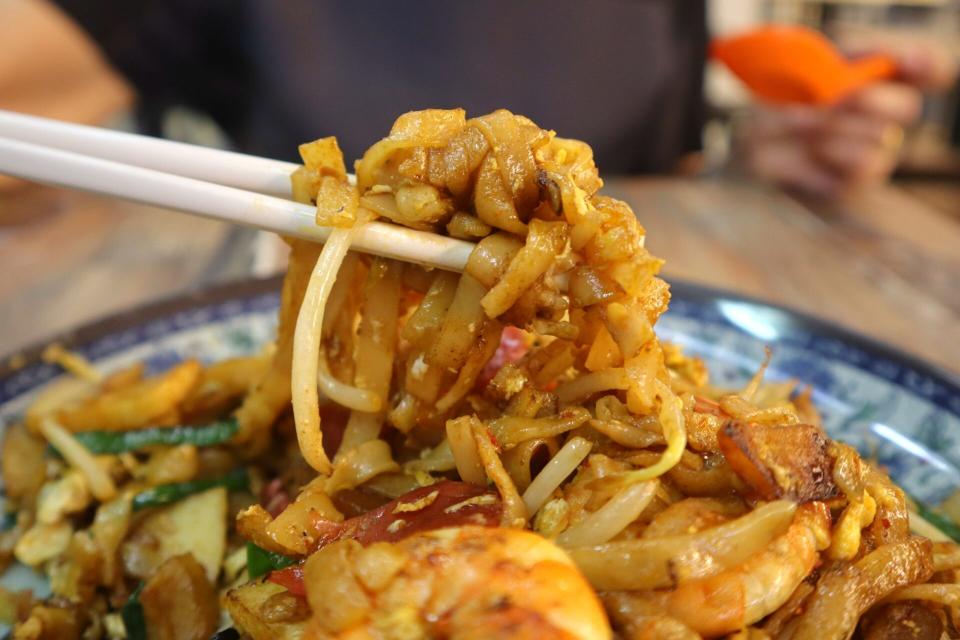
The Chinese sausage slices and fish cake complemented the noodles really well. The 2 pieces of prawns, however, were sadly a tad overcooked and dry for me.

I also felt that the plate of Penang Fried Kway Teow could do with a little more seasoning as the taste was a little too bland for me.
Feeling stuffed from all the food we had earlier on, we decided to end off by sharing a bowl of Penang Chendol with Red Beans (S$3.20). The mound of crushed ice was generously topped with the maroon-hued beans and pale green jelly.

Upon mixing and breaking up the ice, we realised that all the gula melaka had seeped through the ice and hid itself, waiting to be discovered by hungry humans. And indeed, it made its presence felt.
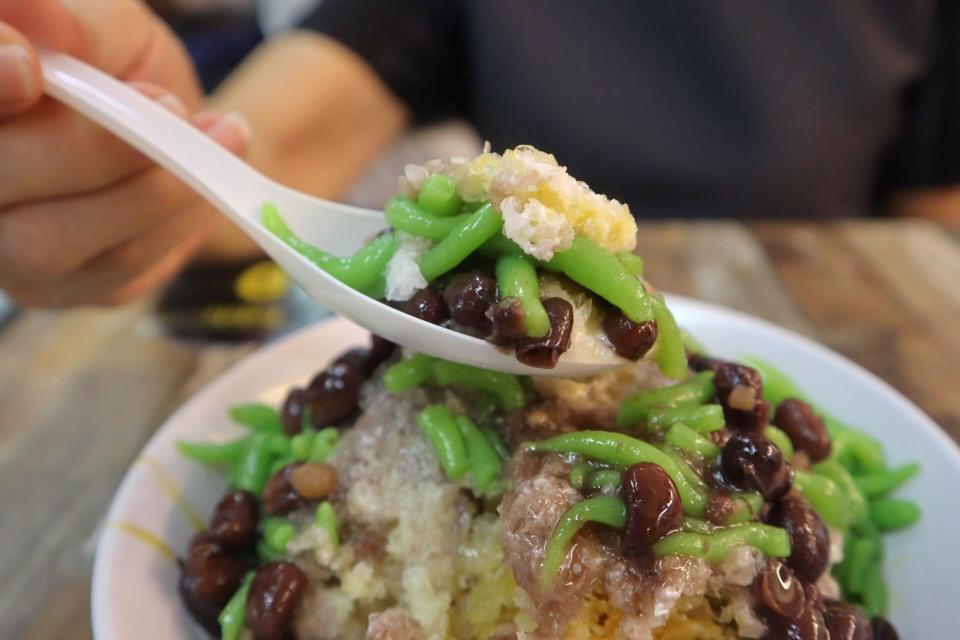
The smokey, butterscotch-like flavours of the palm sugar filled my entire mouth with its alluring fragrance. The pale green jelly tasted strongly of pandan and the red beans were creamy and melt-in-the-mouth— a great finish to our meal.
Final thoughts

There were some strong and weak points for every dish that we had at Traditional Penang Food. Native Penang folks may agree that the tastes may not be as authentic as the dishes found back in their homeland, but at least we had our cravings fixed and had a satisfactory lunch.
Try it for yourself and tell me your thoughts.
Expected damage: S$5.50 – S$10 per pax
The post Traditional Penang Food: Authentic Penang assam laksa, fried kway teow, Nyonya fried rice & chendol in Toa Payoh appeared first on SETHLUI.com.


